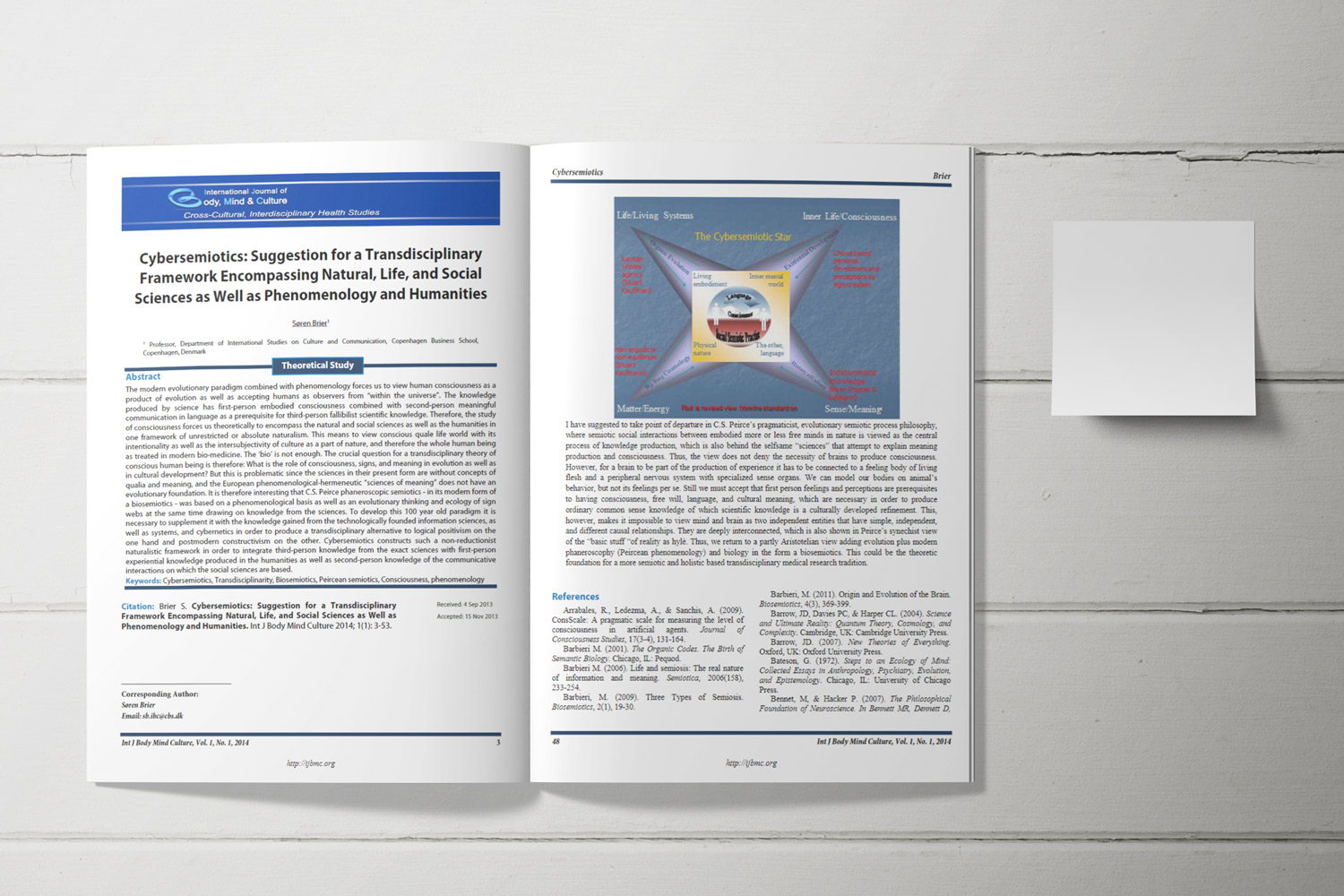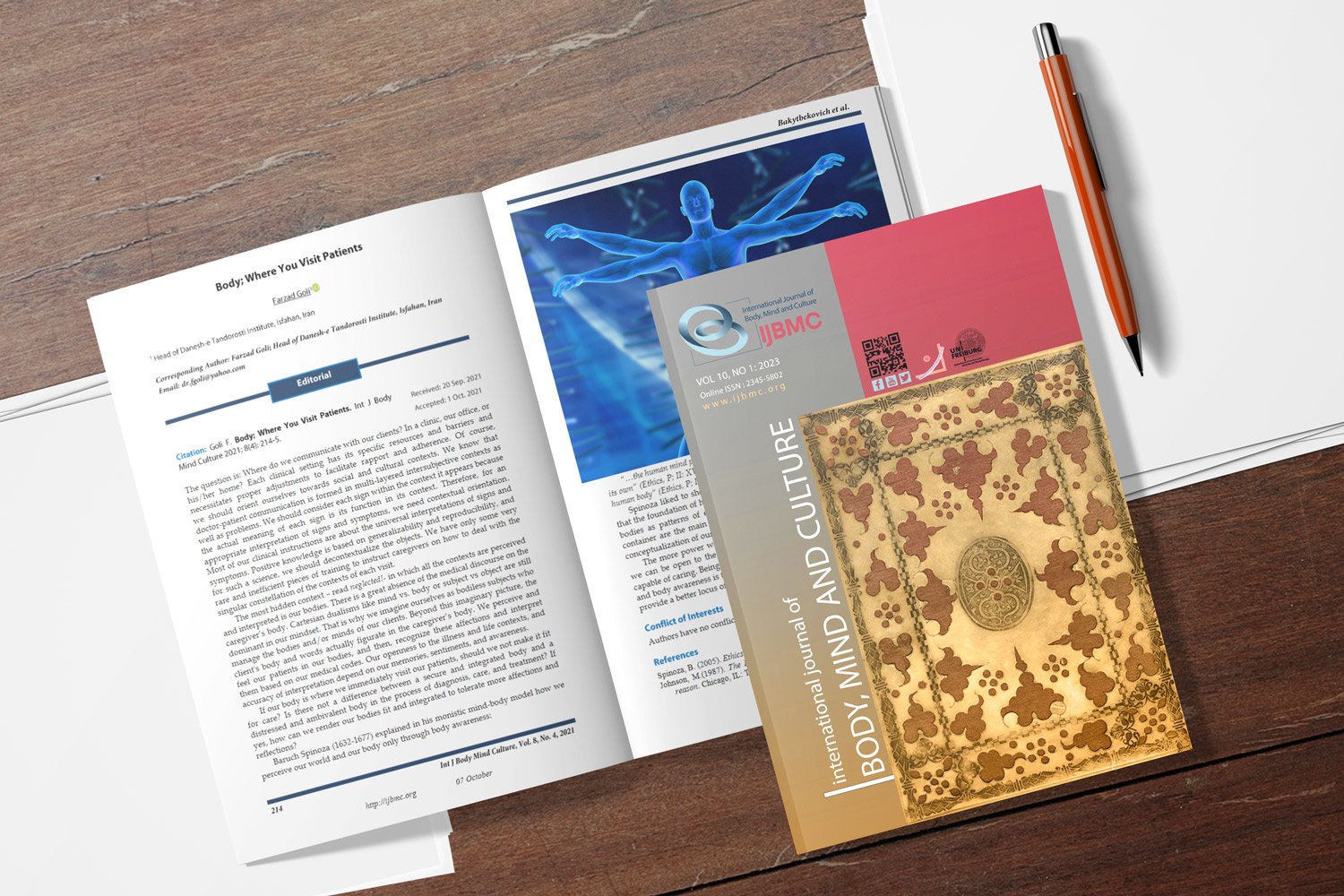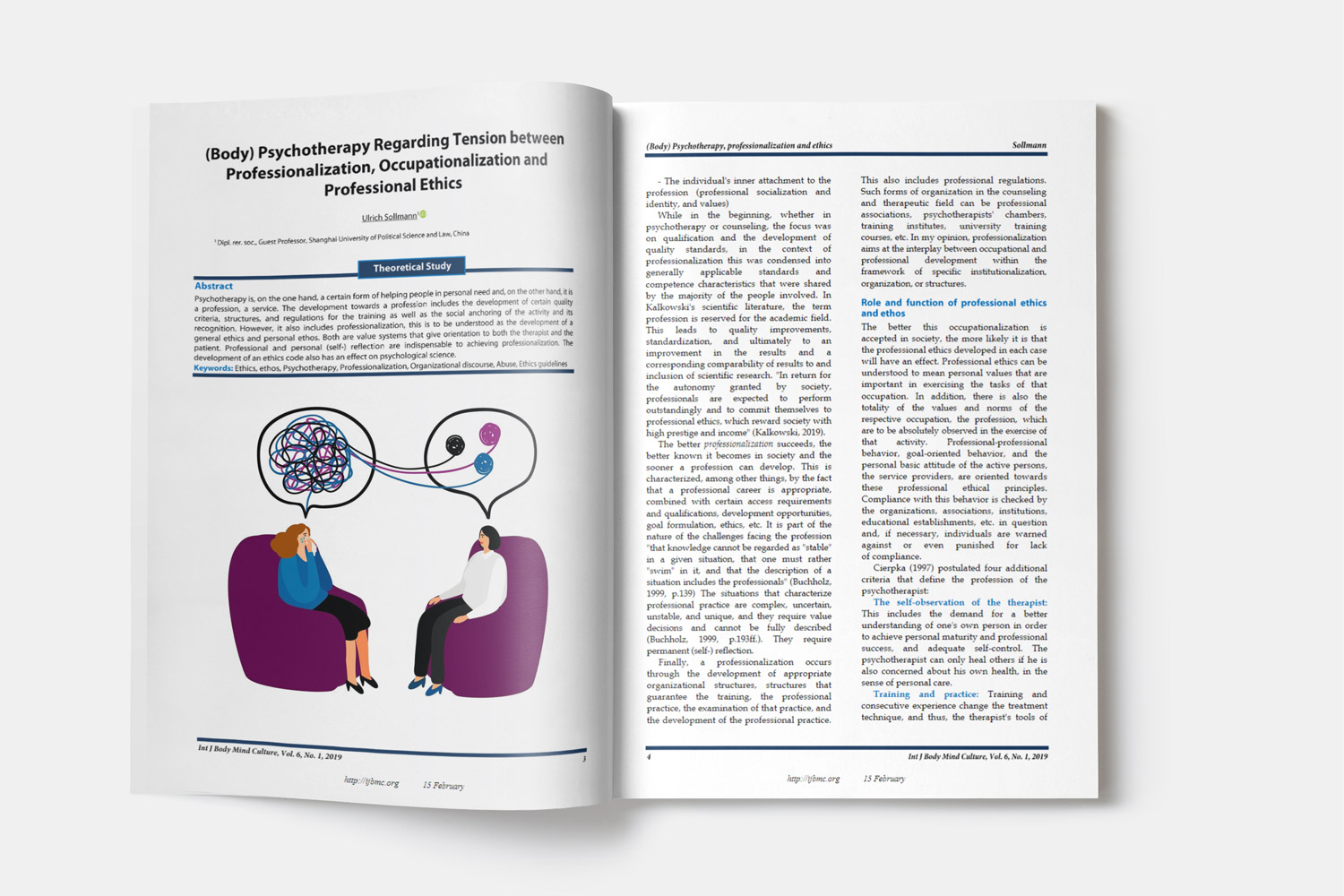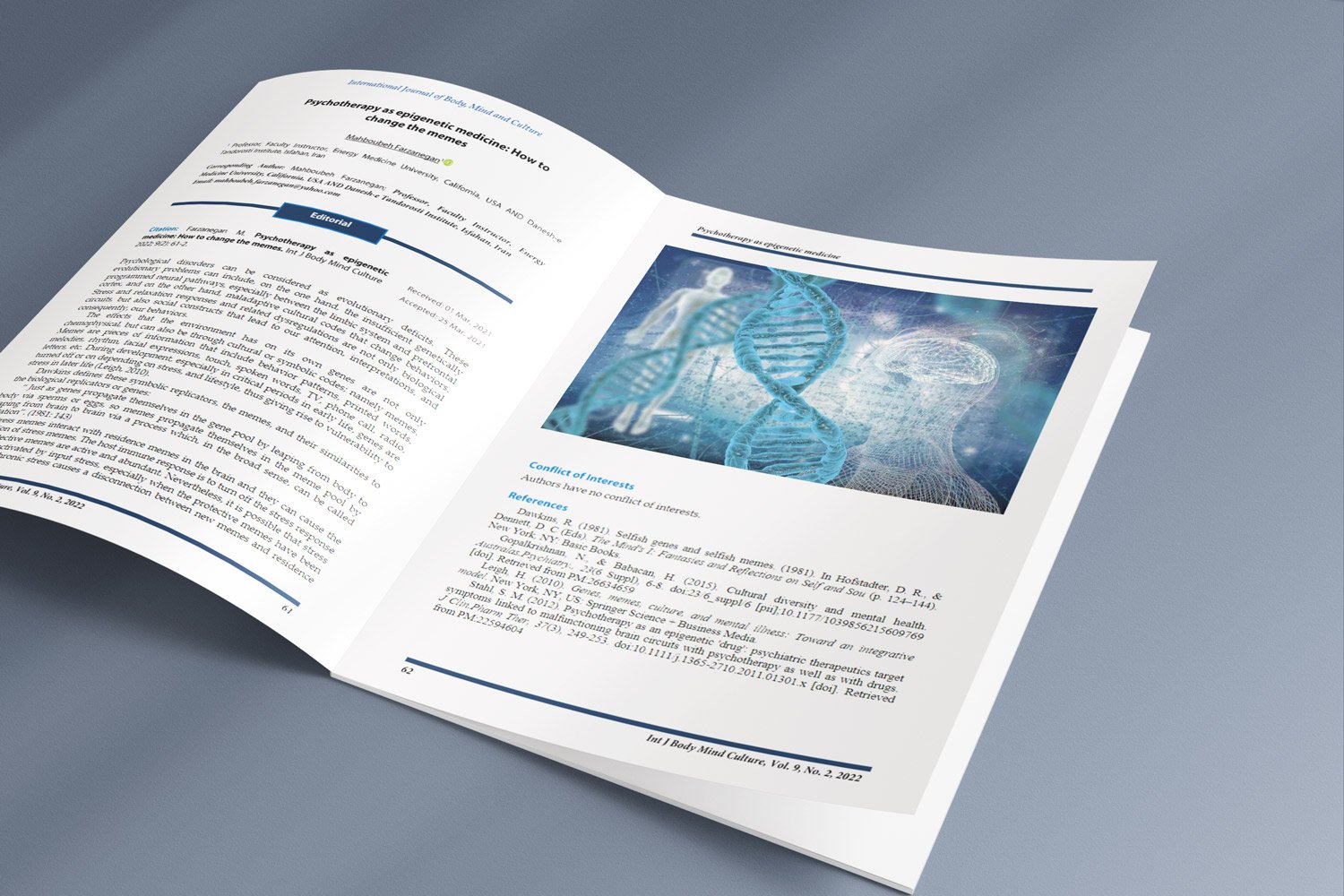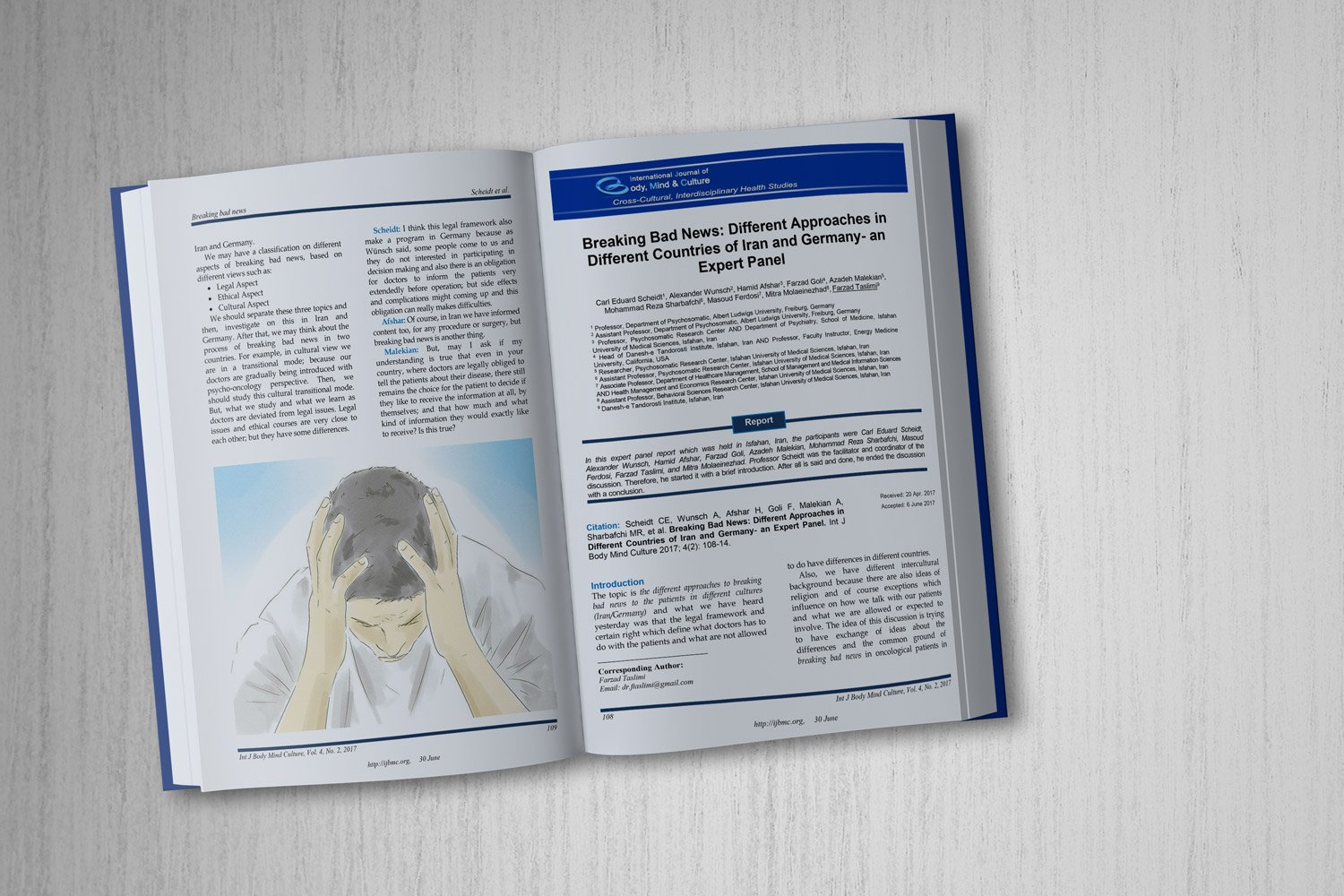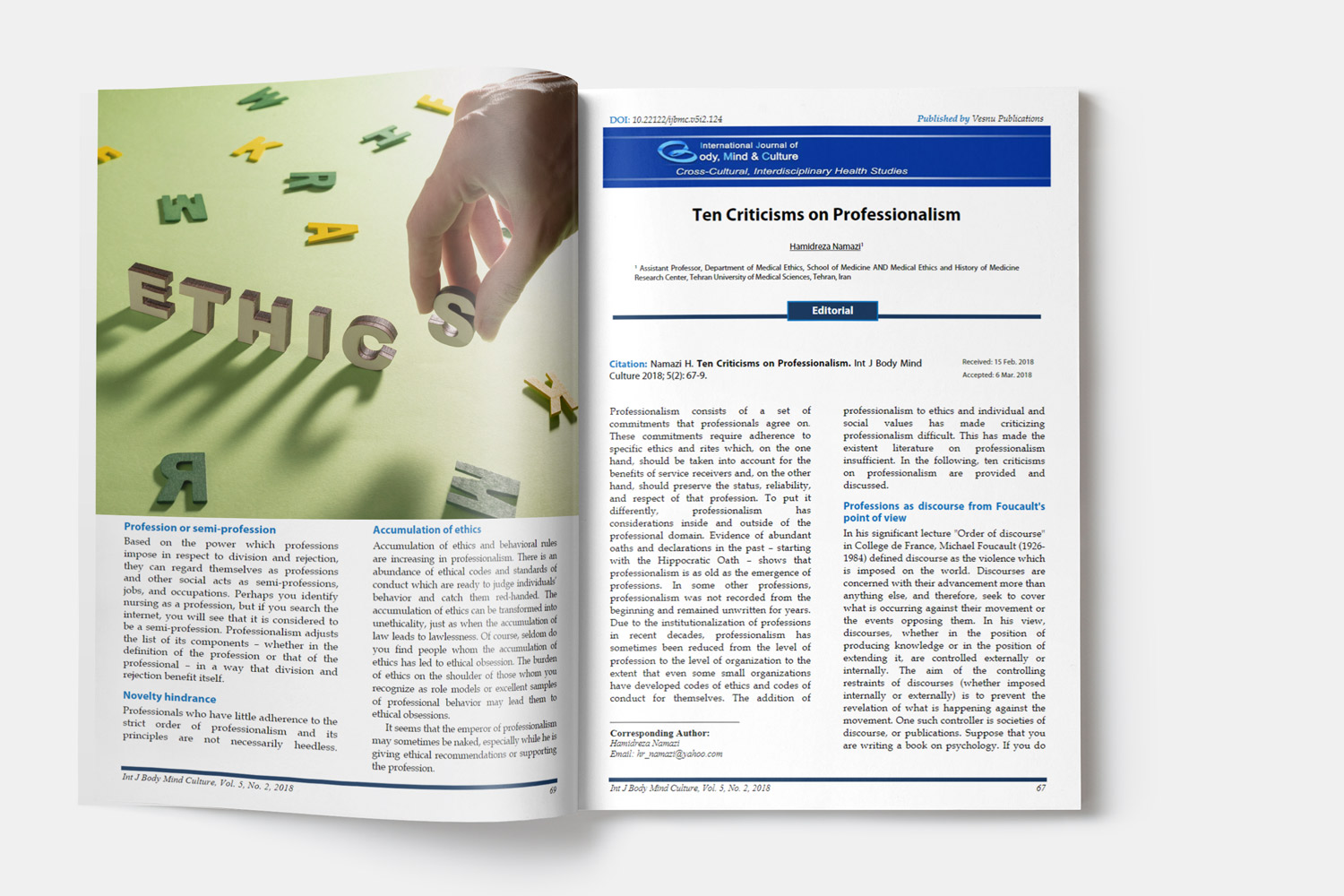Associations Between Body Mass Index and Key Health Indicators in Elderly Populations: A Case Study
Downloads
Objective: This study examined the associations between Body Mass Index (BMI) and key health indicators, including waist circumference, blood pressure, random blood sugar, and uric acid levels, in an elderly community setting.
Methods and Materials: A cross-sectional design was employed, involving 31 participants (mean age: 66.81 ± 2.83 years) selected through purposive sampling.
Findings: Spearman's Rho correlation analysis revealed significant associations between BMI and waist circumference (r = 0.653, p < 0.001), blood pressure (r = 0.616, p < 0.001), and uric acid levels (r = 0.731, p < 0.001). A moderate positive correlation was also observed between BMI and random blood sugar (r = 0.538, p = 0.002). However, multiple regression analysis demonstrated that BMI significantly predicted waist circumference (B = 0.400, p = 0.006), blood pressure (B = 0.274, p = 0.008), and uric acid levels (B = 0.490, p = 0.002), while its effect on random blood sugar was not statistically significant (B = 0.068, p = 0.630).
Conclusion: The findings suggest that BMI is a critical predictor of waist circumference, blood pressure, and uric acid levels, underscoring its importance in managing metabolic and cardiovascular health risks in elderly populations. It is hoped that through this study, practical implications can be applied to mitigate larger health risks by integrating tailored physical activity programs, dietary modifications, and routine health monitoring to address obesity-related complications in older adults.
Downloads
Akhmet, D. (2017). Age Periods of Human Life. Advances in Social Sciences Research Journal, 4(6), 258-263. https://doi.org/10.14738/assrj.46.2924
Anton, S. D., Manini, T. M., Milsom, V. A., Dubyak, P., Cesari, M., Cheng, J., Daniels, M. J., Marsiske, M., Pahor, M., Leeuwenburgh, C., & Perri, M. G. (2011). Effects of a weight loss plus exercise program on physical function in overweight, older women: a randomized controlled trial. Clinical Interventions in Aging, 6, 141-149. https://doi.org/10.2147/CIA.S17001
Bays, H. E., Kirkpatrick, C., Maki, K. C., Toth, P. P., Morgan, R. T., Tondt, J., Christensen, S. M., Dixon, D., & Jacobson, T. A. (2024). Obesity, dyslipidemia, and cardiovascular disease: A joint expert revi ew from the Obesity Medicine Association and the National Lipid Associ ation 2024. Obesity pillars, 10, 100108. https://doi.org/10.1016/j.obpill.2024.100108
Bull, F. C., Al-Ansari, S. S., Biddle, S., Borodulin, K., Buman, M. P., Cardon, G., Carty, C., Chaput, J.-P., Chastin, S., Chou, R., Dempsey, P. C., DiPietro, L., Ekelund, U., Firth, J., Friedenreich, C. M., Garcia, L., Gichu, M., Jago, R., Katzmarzyk, P. T., . . . Willumsen, J. F. (2020). World Health Organization 2020 guidelines on physical activity and sed entary behaviour. British Journal of Sports Medicine, 54(24), 1451-1462. https://doi.org/10.1136/bjsports-2020-102955
Cesare, M., Perel, P., Taylor, S., Kabudula, C., Bixby, H., Gaziano, T. A., McGhie, D. V., Mwangi, J., Pervan, B., Narula, J., Pineiro, D., & Pinto, F. J. (2024). The Heart of the World. Global heart, 19(1), 11. https://doi.org/10.5334/gh.1288
Chafjiri, R. T., Shirinkam, F., & Karimi, H. (2018). Investigating the effect of education on health-promoting lifestyle am ong the elderly of Ramsar in 2017. Journal of Family Medicine and Primary Care, 7(3), 612-617. https://doi.org/10.4103/jfmpc.jfmpc_306_17
Després, J. P., Lemieux, I., Bergeron, J., Pibarot, P., Mathieu, P., Larose, E., Rodés-Cabau, J., Bertrand, O. F., & Poirier, P. (2008). Abdominal Obesity and the Metabolic Syndrome: Contribution to global c ardiometabolic risk. Arteriosclerosis, Thrombosis, and Vascular Biology, 28(6), 1039-1049. https://doi.org/10.1161/ATVBAHA.107.159228
Ferrucci, L., & Kuchel, G. A. (2021). Heterogeneity of Aging: Individual Risk Factors, Mechanisms, Patient P riorities, and Outcomes. Journal of the American Geriatrics Society, 69(3), 610-612. https://doi.org/10.1111/jgs.17011
Fien, S., Linton, C., Mitchell, J. S., Wadsworth, D. P., Szabo, H., Askew, C. D., & Schaumberg, M. A. (2022). Characteristics of community-based exercise programs for community-dwe lling older adults in rural/regional areas: a scoping review. Aging Clinical and Experimental Research, 34(7), 1511-1528. https://doi.org/10.1007/s40520-022-02079-y
Genova, M. P., Atanasova, B. D., & Todorova-Ananieva, K. N. (2018). Body mass index and insulin sensitivity/resistance: cross talks in ges tational diabetes, normal pregnancy and beyond. Body-mass Index and Health, 5, 20-53. https://www.intechopen.com/chapters/62232
Gill, L. E., Bartels, S. J., & Batsis, J. A. (2015). Weight Management in Older Adults. Current Obesity Reports, 4(3), 379-388. https://doi.org/10.1007/s13679-015-0161-z
Gupta, R., Parray, A. A., Kothadia, R. J., Pulock, O. S., Pinky, S. D., Haider, S. S., Akonde, M., & Haider, M. R. (2024). The association between body mass index and abdominal obesity with hyp ertension among South Asian population: findings from nationally repre sentative surveys. Clinical Hypertension, 30(1), 3. https://doi.org/10.1186/s40885-023-00257-2
Hardy, O. T., Czech, M. P., & Corvera, S. (2012). What causes the insulin resistance underlying obesity? Current opinion in endocrinology, diabetes, and obesity, 19(2), 81-87. https://doi.org/10.1097/MED.0b013e3283514e13
Jin, X., Qiu, T., Li, L., Yu, R., Chen, X., Li, C., Proud, C. G., & Jiang, T. (2023). Pathophysiology of obesity and its associated diseases. Acta pharmaceutica Sinica. B, 13(6), 2403-2424. https://doi.org/10.1016/j.apsb.2023.01.012
Juraschek, S. P., Millar, C. L., Foley, A., Shtivelman, M., Cohen, A., McNally, V., Crevatis, R., Post, S. M., Mukamal, K. J., Lipsitz, L. A., Cluett, J. L., Davis, R. B., & Sahni, S. (2021). The Effects of a Low Sodium Meal Plan on Blood Pressure in Older Adult s: The SOTRUE Randomized Feasibility Trial. Nutrients, 13(3). https://doi.org/10.3390/nu13030964
Kazeminia, M., Daneshkhah, A., Jalali, R., Vaisi-Raygani, A., Salari, N., & Mohammadi, M. (2020). The effect of exercise on the older adult's blood pressure suffering h ypertension: systematic review and meta-analysis on clinical trial stu dies. International Journal of Hypertension, 2020. https://pubmed.ncbi.nlm.nih.gov/33014449/
Kesavadev, J., Misra, A., Saboo, B., Aravind, S. R., Hussain, A., Czupryniak, L., & Raz, I. (2021). Blood glucose levels should be considered as a new vital sign indicati ve of prognosis during hospitalization. Diabetes & metabolic syndrome, 15(1), 221-227. https://doi.org/10.1016/j.dsx.2020.12.032
Khan, S. S., Ning, H., Wilkins, J. T., Allen, N., Carnethon, M., Berry, J. D., Sweis, R. N., & Lloyd-Jones, D. M. (2018). Association of Body Mass Index With Lifetime Risk of Cardiovascular Di sease and Compression of Morbidity. Jama Cardiology, 3(4), 280-287. https://doi.org/10.1001/jamacardio.2018.0022
Khanna, D., Peltzer, C., Kahar, P., & Parmar, M. S. (2022). Body Mass Index (BMI): A Screening Tool Analysis. Cureus, 14(2), e22119. https://doi.org/10.7759/cureus.22119
Koziarska-Rościszewska, M., Gluba-Brzózka, A., Franczyk, B., & Rysz, J. (2021). High-Sensitivity C-Reactive Protein Relationship with Metabolic Disord ers and Cardiovascular Diseases Risk Factors. Life, 11(8). https://doi.org/10.3390/life11080742
Kwak, S., Kim, H., Chey, J., & Youm, Y. (2018). Feeling how old I am: Subjective age is associated with estimated brai n age. Frontiers in Aging Neuroscience, 10, 346825. https://www.frontiersin.org/journals/aging-neuroscience/articles/10.3389/fnagi.2018.00168/full
Liguori, G., & Medicine, A. C. o. S. (2020). ACSM's guidelines for exercise testing and prescription. Lippincott Williams & Wilkins. https://acsm.org/education-resources/books/guidelines-exercise-testing-prescription/
McPhee, J. S., French, D. P., Jackson, D., Nazroo, J., Pendleton, N., & Degens, H. (2016). Physical activity in older age: perspectives for healthy ageing and fr ailty. Biogerontology, 17(3), 567-580. https://doi.org/10.1007/s10522-016-9641-0
Messier, S. P., Mihalko, S. L., Legault, C., Miller, G. D., Nicklas, B. J., DeVita, P., Beavers, D. P., Hunter, D. J., Lyles, M. F., Eckstein, F., Williamson, J. D., Carr, J. J., Guermazi, A., & Loeser, R. F. (2013). Effects of intensive diet and exercise on knee joint loads, inflammati on, and clinical outcomes among overweight and obese adults with knee osteoarthritis: the IDEA randomized clinical trial. JAMA, 310(12), 1263-1273. https://doi.org/10.1001/jama.2013.277669
Mitina, M., Young, S., & Zhavoronkov, A. (2020). Psychological aging, depression, and well-being. Aging, 12(18), 18765-18777. https://doi.org/10.18632/aging.103880
Putra, C., Konow, N., Gage, M., York, C. G., & Mangano, K. M. (2021). Protein Source and Muscle Health in Older Adults: A Literature Review. Nutrients, 13(3). https://doi.org/10.3390/nu13030743
Reinbacher, P., Draschl, A., Smolle, M. A., Hecker, A., Gaderer, F., Lanner, K.-B., Ruckenstuhl, P., Sadoghi, P., Leithner, A., Nehrer, S., Klestil, T., Brunnader, K., & Bernhardt, G. A. (2023). The Impact of Obesity on the Health of the Older Population: A Cross-S ectional Study on the Relationship between Health-Related Quality of Life and Body Mass Index across Different Age Groups. Nutrients, 16(1). https://doi.org/10.3390/nu16010051
Rismayanthi, C. (2024). The analysis of the relationship between blood pressure and cardiovasc ular capacity in the elderlies. fizjoterapiapolska, 24(1), 36-41. https://ouci.dntb.gov.ua/en/works/7AKd8w3l/
Robinson, S. M. (2018). Improving nutrition to support healthy ageing: what are the opportunit ies for intervention? The Proceedings of the Nutrition Society, 77(3), 257-264. https://doi.org/10.1017/S0029665117004037
Roddy, E., & Choi, H. K. (2014). Epidemiology of Gout. Rheumatic Disease Clinics of North America, 40(2), 155-175. https://doi.org/10.1016/j.rdc.2014.01.001
Ross, R., Neeland, I. J., Yamashita, S., Shai, I., Seidell, J., Magni, P., Santos, R. D., Arsenault, B., Cuevas, A., Hu, F. B., Griffin, B. A., Zambon, A., Barter, P., Fruchart, J.-C., Eckel, R. H., Matsuzawa, Y., & Després, J.-P. (2020). Waist circumference as a vital sign in clinical practice: a Consensus Statement from the IAS and ICCR Working Group on Visceral Obesity. Nature reviews. Endocrinology, 16(3), 177-189. https://doi.org/10.1038/s41574-019-0310-7
Shariq, O. A., & McKenzie, T. J. (2020). Obesity-related hypertension: a review of pathophysiology, management, and the role of metabolic surgery. Gland surgery, 9(1), 80-93. https://doi.org/10.21037/gs.2019.12.03
Sui, X., Sarzynski, M. A., Lee, D.-C., & Kokkinos, P. F. (2017). Impact of Changes in Cardiorespiratory Fitness on Hypertension, Dyslip idemia and Survival: An Overview of the Epidemiological Evidence. Progress in Cardiovascular Diseases, 60(1), 56-66. https://doi.org/10.1016/j.pcad.2017.02.006
Tseng, W.-C., Chen, Y.-T., Lin, Y.-P., Ou, S.-M., Yang, C.-Y., Lin, C.-H., & Tarng, D.-C. (2019). Hyperuricemia Predicts an Early Decline in Renal Function among Older People: A Community-Based Cohort Study. Scientific reports, 9(1), 980. https://doi.org/10.1038/s41598-018-37529-z
Uemura, K., Kamitani, T., Yamada, M., & Okamoto, H. (2021). Longitudinal Effects of Active Learning Education on Lifestyle Behavio r and Physical Function in Older Adults. Journal of the American Medical Directors Association, 22(2), 459-463. https://doi.org/10.1016/j.jamda.2020.05.014
Whelton, P. K., Carey, R. M., Aronow, W. S., Casey, D. E., Jr., Collins, K. J., Dennison Himmelfarb, C., DePalma, S. M., Gidding, S., Jamerson, K. A., Jones, D. W., MacLaughlin, E. J., Muntner, P., Ovbiagele, B., Smith, S. C., Jr., Spencer, C. C., Stafford, R. S., Taler, S. J., Thomas, R. J., Williams, K. A., Sr., . . . Wright, J. T., Jr. (2018). 2017 ACC/AHA/AAPA/ABC/ACPM/AGS/APhA/ASH/ASPC/NMA/PCNA Guideline for th e Prevention, Detection, Evaluation, and Management of High Blood Pre ssure in Adults: A Report of the American College of Cardiology/Americ an Heart Association Task Force on Clinical P. Journal of the American College of Cardiology, 71(19), e127-e248. https://doi.org/10.1016/j.jacc.2017.11.006
World Health Organization. (2011). Waist circumference and waist-hip ratio: report of a WHO expert consul tation, Geneva, 8-11 December 2008. https://www.who.int/publications/i/item/9789241501491
Wu, Y., Li, D., & Vermund, S. H. (2024). Advantages and Limitations of the Body Mass Index (BMI) to Assess Adul t Obesity. International journal of environmental research and public health, 21(6). https://doi.org/10.3390/ijerph21060757
Xue, Y., Yang, X., & Liu, G. (2024). Association of combined body mass index and central obesity with cardi ovascular disease in middle-aged and older adults: a population-based prospective cohort study. BMC Cardiovascular Disorders, 24(1), 443. https://doi.org/10.1186/s12872-024-04079-4
Yamamoto, Y., Ikeue, K., Kanasaki, M., Yamakage, H., Satoh-Asahara, N., Masuda, I., & Ishii, K. (2024). Age-wise examination of the association of obesity based on body mass index and waist circumference with metabolic diseases in comprehensiv e health checkup participants. Obesity Science & Practice, 10(2), e746. https://doi.org/10.1002/osp4.746
Zeng, J., Lawrence, W. R., Yang, J., Tian, J., Li, C., Lian, W., He, J., Qu, H., Wang, X., Liu, H., Li, G., & Li, G. (2021). Association between serum uric acid and obesity in Chinese adults: a 9 -year longitudinal data analysis. BMJ open, 11(2), e041919. https://doi.org/10.1136/bmjopen-2020-041919
Zhang, K., Ma, Y., Luo, Y., Song, Y., Xiong, G., Ma, Y., Sun, X., & Kan, C. (2023). Metabolic diseases and healthy aging: identifying environmental and be havioral risk factors and promoting public health. Frontiers in Public Health, 11, 1253506. https://doi.org/10.3389/fpubh.2023.1253506
Copyright (c) 2025 International Journal of Body, Mind and Culture

This work is licensed under a Creative Commons Attribution-NonCommercial 4.0 International License.










